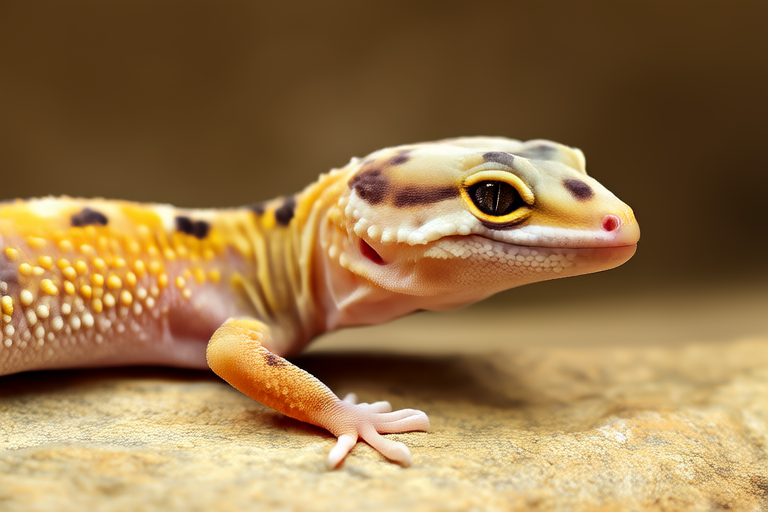Adorable Leopard Gecko Photos That Will Melt Your Heart
Welcome to a delightful journey through the enchanting world of leopard geckos! These petite reptiles, native to the arid regions of Pakistan, Afghanistan, and northwestern India, have captured the hearts of countless pet enthusiasts. With their charming appearance and gentle demeanor, leopard geckos are not just pets but companions that bring joy and fascination into our lives. This article showcases a collection of adorable photos that will melt your heart while offering insights into what makes these creatures so special.
The Unique Charm of Leopard Geckos
Leopard geckos are known for their distinctive spotted patterns, reminiscent of the big cats from which they derive their name. Their vibrant colors and smooth skin add to their appeal, making them visually striking pets. Unlike many other reptiles, leopard geckos are primarily terrestrial, spending most of their time on the ground rather than climbing trees. This behavior, combined with their docile nature, makes them particularly suitable as pets for those new to reptile ownership.
Distinctive Features
One of the most striking features of leopard geckos is their ability to change color based on temperature and light conditions. In cooler environments, they may appear paler or more subdued, while in warmer settings, their spots can become more pronounced and vivid. Another remarkable characteristic is their nocturnal lifestyle; they are most active during the night, which adds an element of mystery to their charm.
Leopard geckos also possess specialized sensory organs called Pit Organs, located between their eyes and nostrils. These organs allow them to detect heat signatures, aiding in hunting and navigation. Additionally, their tail is a vital part of their anatomy, serving both as a fat storage unit and a defense mechanism. If threatened, a leopard gecko can voluntarily detach its tail, distracting predators long enough to escape.
Behaviors and Activities
Leopard geckos exhibit fascinating behaviors that are a joy to observe. They are generally calm and easygoing, rarely showing signs of aggression. One of their most endearing traits is their tendency to ‘wave’ when they encounter another gecko or object they cannot move. This behavior, known as ‘head bobbing,’ is often accompanied by opening and closing their mouths, creating a comical sight.
In photos, you might catch a leopard gecko in various adorable poses. Some may be lounging on a rock, basking under a heat lamp, while others could be seen exploring their enclosure, nose to the ground, sniffing out every nook and cranny. Others might be curled up in a cozy hideaway, taking a nap or simply enjoying the warmth of their environment.
Why Leopard Geckos Make Great Pets
Leopard geckos are among the easiest reptiles to care for, making them ideal for beginners. Their relatively small size means they require less space compared to larger reptiles, and their dietary needs are straightforward. Feeding them is simple; they primarily consume insects like crickets, mealworms, and waxworms. It’s important to dust these insects with calcium and vitamin supplements to ensure proper nutrition.
Moreover, leopard geckos are clean animals that do not require frequent handling. However, they do enjoy gentle interactions, such as being held or petted gently on their back. Their docility and low-maintenance requirements make them perfect companions for busy individuals or families with children.
Caring for Leopard Geckos: Tips for Potential Owners
If you’re considering bringing a leopard gecko into your home, there are several essential aspects of care to keep in mind. First and foremost, providing a suitable habitat is crucial. A glass terrarium with a secure lid is ideal, allowing for ventilation while preventing escapes. The enclosure should be spacious enough for the gecko to move around comfortably, with plenty of hiding spots and climbing structures.
Maintaining the right temperature gradient within the enclosure is vital for your gecko’s health. One side should be warmer, around 90°F (32°C), while the cooler side should be around 75°F (24°C). A heat lamp or ceramic heater can be used to achieve this, ensuring that your gecko has access to both warm and cool areas.
Humidity levels should be kept moderate, between 30% and 40%. Leopard geckos do not need a humid environment, but they do require occasional misting to help with shedding. Providing a shallow water dish is also necessary, as it allows them to drink and soak if needed.
Regular cleaning of the enclosure is essential to maintain hygiene and prevent any health issues. Spot cleaning daily and performing a thorough clean every few weeks will keep your gecko’s living space fresh and inviting.
Lastly, it’s important to monitor your gecko’s health closely. Signs of illness include lethargy, loss of appetite, or changes in skin color. Regular visits to a veterinarian specializing in reptiles can help ensure your gecko stays healthy and happy.
Conclusion
Leopard geckos are truly delightful creatures, combining beauty, intelligence, and charm in ways that make them irresistible as pets. Whether lounging on a rock, exploring their enclosure, or simply enjoying a nap, these little reptiles offer endless opportunities for adoration. By following the care tips outlined in this article, you can provide your leopard gecko with a comfortable and enriching environment, ensuring years of companionship and joy.
So, why not consider adding one of these adorable reptiles to your family? With their unique features, endearing behaviors, and ease of care, leopard geckos are sure to capture your heart and bring endless smiles to your face.
